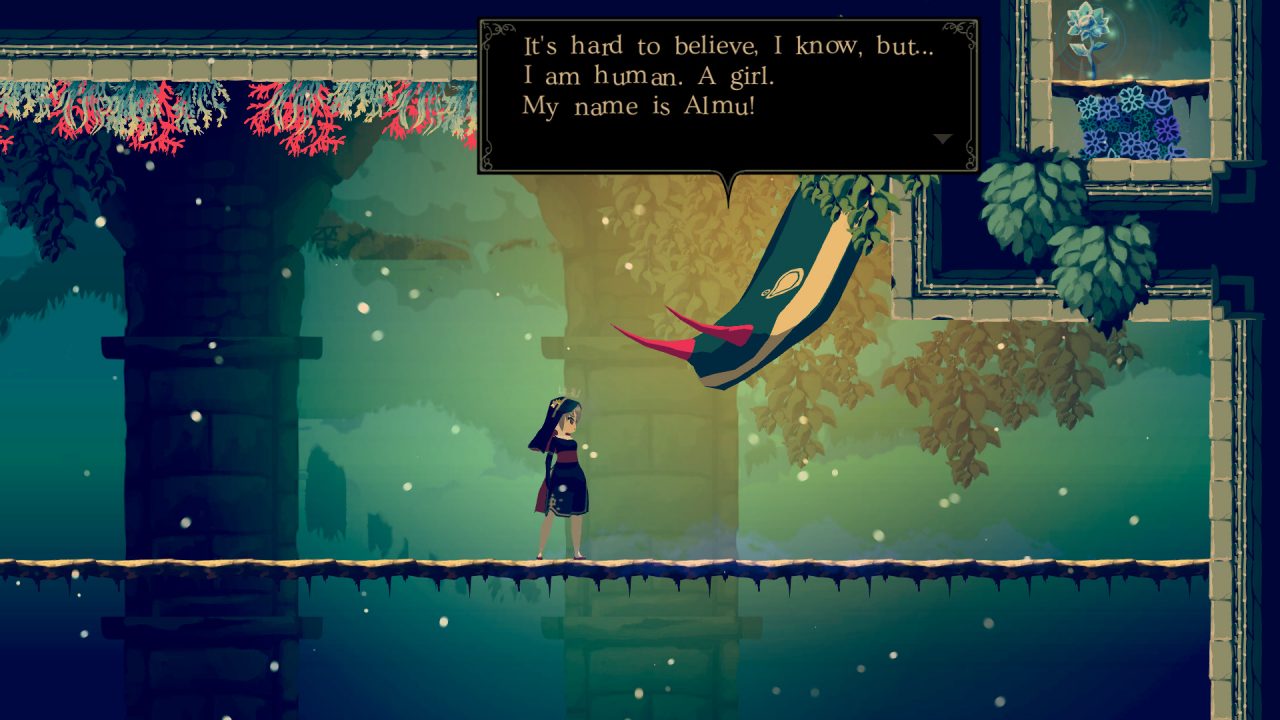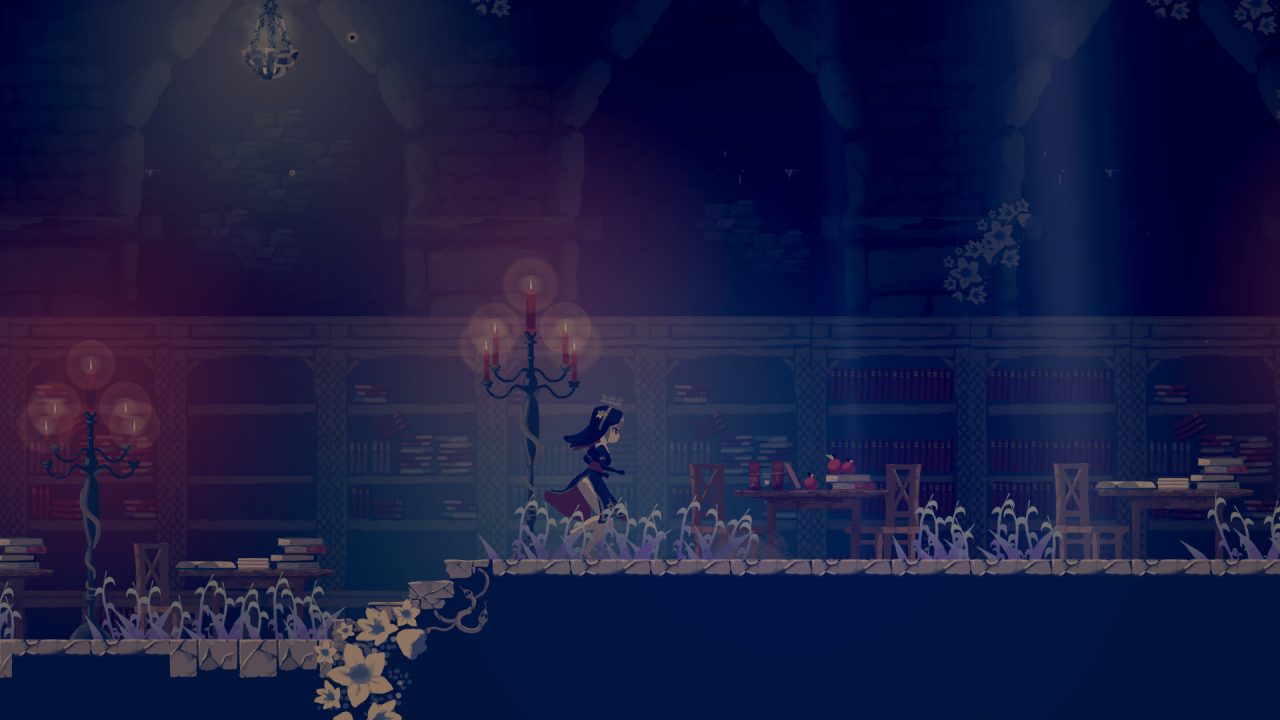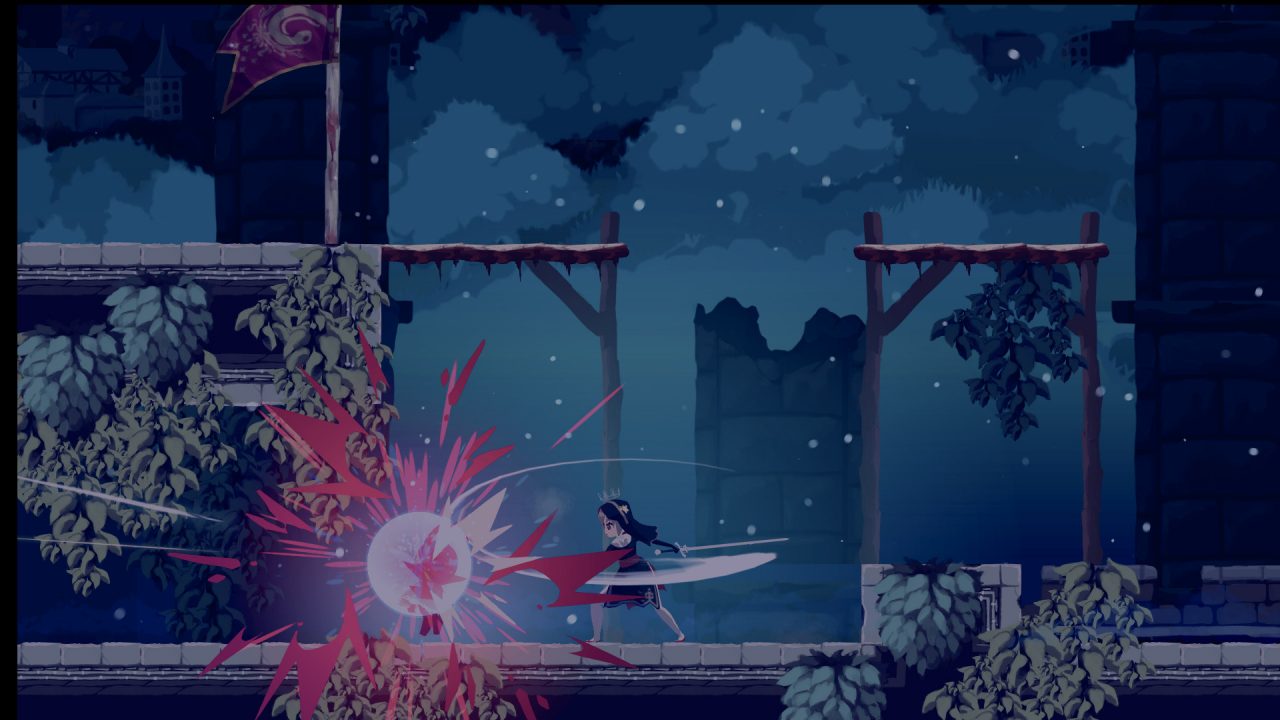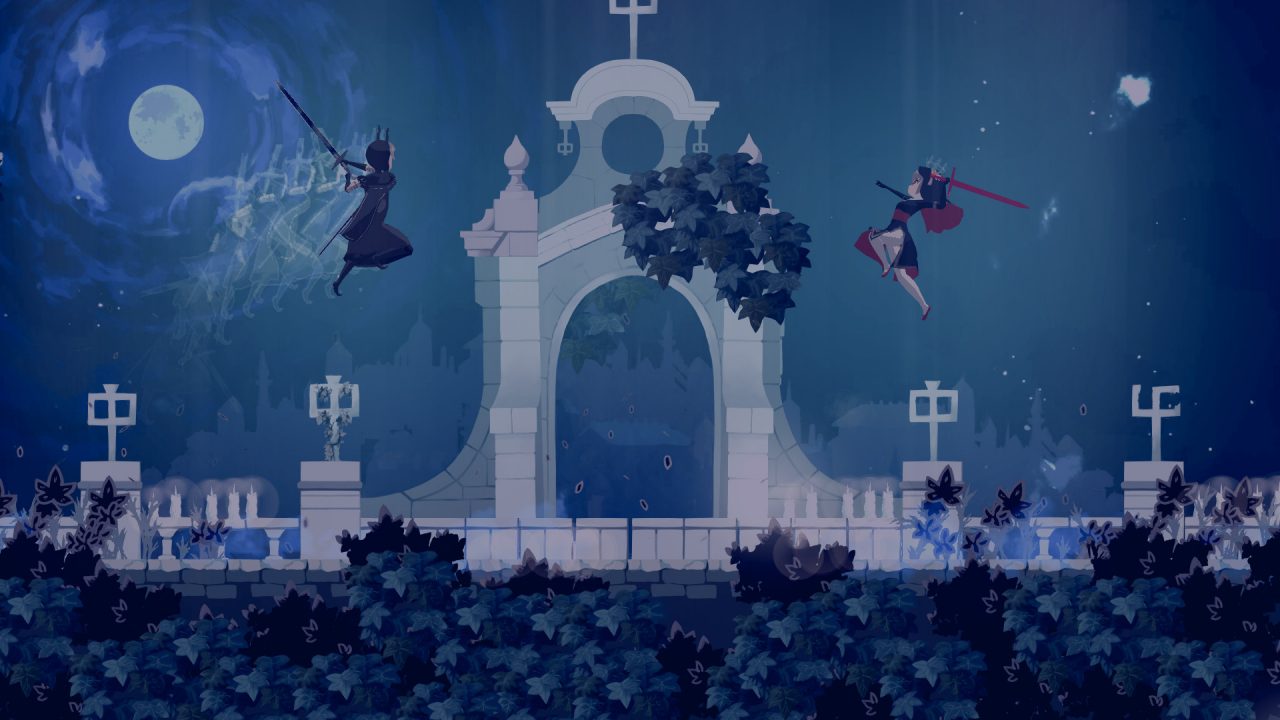From the creators of Momodora: Reverie Under The Moonlight comes a grim and melancholy spiritual successor: Minoria. Sharing much of its DNA with its predecessor, Minoria has similar features while trying to create an individual identity in the swelling sea of 2D side-scrolling action-platformers with RPG elements — commonly referred to as Metroidvanias. The result is a brief and experimental excursion that stands out in a few notable ways while falling short in others. It has a beautiful story, chilling music, and a superb atmosphere overall. However, a few nicks mar what would otherwise be a compelling experience.
Minoria opens with a dark yet familiar premise. Witches have taken over the castle and hold the crown princess Amelia hostage. In the world of Minoria, nuns are suited for battle and are often dispatched to smite witches, punish blasphemers, and cut down heretics before they have a chance to wag their devilish tongues. The church responds by sending a force of said nuns to reclaim the castle, yet this operation falls flat on its face as the two forces clash in a wave of bloodshed that results in heavy losses for all.
The one dispatched by the church in the aftermath is Sister Semilla, the game’s main character. Accompanying her is Sister Anna Fran, a nun who isn’t trained in the art of combat yet excels in the art of sealing witches. Semilla is essentially a silent protagonist, though a few dialogue choices add a touch of personality to the otherwise mute Sister. It is mentioned that nuns such as herself are instructed to speak only when spoken to and only when necessary, which provides an in-world justification for the lack of commentary. Sister Anna Fran, on the other hand, does most of the talking and often chimes in with her thoughts on events.

The chemistry between the two Sisters is intriguing, as they contrast with one another in both characterization and design. In Sister Anna Fran, the game presents an innocent young woman who wishes to harm no one. This is expressed in her cheerful and hopeful demeanor, talkative and curious nature, and her large white garb reflecting a sense of purity. Sister Semilla, on the other hand, is clad in black and carries an arsenal of weapons with her. Atop her head is a crystalline crown, intended to strike fear into her enemies. From her striking design, general silence, and combat mastery, she acts as a blade for the church and continues to find herself soaked in blood for her faith.
With faith and religion at the forefront of the narrative, Minoria’s story is both dark and critical. Early on, there is some exposition on the Witch Wars, which is fully intended to paint the church as a source of salvation and condemn the witches as a source of death and debauchery. Throughout the game, players will find archives, records, and notes which seem to clash with what the church has taught, bringing into question the authenticity of their teachings. While anti-religious storylines are certainly not uncommon in gaming, especially in the world of RPGs, Minoria sets out to tell a tale of those whose hands are already soaked in blood trying to prevent others from following their same dark path.
The trek through this grim tale is presented in the aforementioned Metroidvania style; Minoria is an action platformer with dismally light RPG elements. In combat, Semilla can clash blades with the witches’ progeny while burning incense to call upon magical abilities sanctioned by the church for the destruction of the damned. Each weapon has a very basic combo that does not evolve, extend, or vary in any way. There is the chance to acquire a double jump ability along the journey, though it is integrated into an attack for most weapons, leading to some awkward platforming/weapon switching. A charged up ‘super move’ becomes available as well, yet sharing a button with the basic attack (albeit held down) can lead to some accidental triggers.

Magic in Minoria is limited in use, with each spell assigned a set number of casts. Unfortunately, these spells don’t have a use outside of combat. Triggering traps or switches via magic would’ve added some much-appreciated variety to the gameplay loop. Additionally, only three active spells can be used at once, though one of those is likely always your healing incense. Shifting around through spells via the shoulder buttons can feel cumbersome in the middle of a battle. Controls feel slightly stiff on many occasions, and I never found myself completely comfortable with them.
Many enemies are easily countered by parrying within a very forgiving parry window. Projectiles, strikes, and even magic attacks from enemies can all be canceled and riposted with a room-wide attack that deals heavy damage to the attacker and moderate damage to other targets within the room. Individual enemies never feel particularly threatening when all of their assaults are easily punished. Combat essentially breaks down into spamming basic attacks or parries for immediate threats rather than tactically dispatching foes via differing methods. While exploitable, it’s certainly a stylish display of Semilla’s proficiency with a blade.

Striking down foes and wandering aimlessly is a visual treat, as Minoria‘s gorgeous art style is a pleasant mix of cel-shaded 3D models and beautiful 2D backdrops. Though the environments don’t feel realistic or lived in, they shine as part of the game’s lovely aesthetic, which feels simultaneously dark and bright. While much of the game takes place in and around the castle, the diversity in the locales is welcoming and pleasing to the eyes. A blood-tinged castle, a dingy flooded prison, icy ramparts, a glowing garden, a series of murky caves, and the titular forest all have a sense of beauty and charm that blends well with the striking design of the characters.
The soundtrack is another piece of the grim atmosphere that helps to elevate the experience. A sadness arises in the chilling piano and violin that sets the tone during exploration before evolving into a more dramatic and high-stakes aural affair throughout the numerous boss encounters. If I were to describe the soundtrack in a single word, ‘cold’ would be my choice. It feels ghostly and reminds me of an icy winter day mixed with grey skies and a sense of serenity. It excels in evoking emotions and instilling its intended tone upon the listener, asserting its position as a crucial piece of Minoria’s message.
The one thing Minoria consistently excels in is ambiance. It invokes many of the same feelings I had when playing through Bloodborne‘s Cainhurst Castle and Dark Souls III‘s Irithyll of the Boreal Valley. While the game is nothing like a Souls game, the developers know how to match the eerie, haunting, and empty feeling From Software games tend to capture so well. While there are many faceless mini-bosses, the few named and distinct bosses have unique animations that slow down as they get lower on health. Panting, struggling to swing, and an overall lethargy overcoming them as they get closer to death is quite reminiscent of the somber struggle displayed in the Sif fight in Dark Souls. Feeling pity for one’s foes in Minoria would not be uncalled for.

While it nails the atmosphere, Minoria does fall short in a few areas, including those mentioned before. Its level design, while gorgeous, can be distracting and seemingly random. Controls never feel as fluid as they should, and some awkward button presses can turn the tide in battle. Combat never really evolves, and the weapons all feel largely the same. The RPG elements are incredibly weak and offer no real sense of progression beyond a larger health pool and increasing damage numbers. Being able to upgrade or modify weapons would be nice, as would powering up your magic spells, as some of them become wholly useless by the end of the game due to their low damage output. Clocking in at 6 to 7 hours, Minoria may be a bit too short for some. I felt it didn’t overstay its welcome by much, though the final areas start to stretch its length.
Minoria is a game I’d certainly recommend to anyone looking for a somewhat dark action platformer. The story, art, and music stand out the most in a sea of nearly endless Metroidvanias. It’s a melancholic journey that is sure to leave a lasting impression despite faults with the gameplay and design. The excellent story and atmosphere is a considerable feat for a genre where gameplay is the primary focus. As Bombservice continues to experiment and improve on their minute-to-minute gameplay, I’m very excited to see what the next project is.


